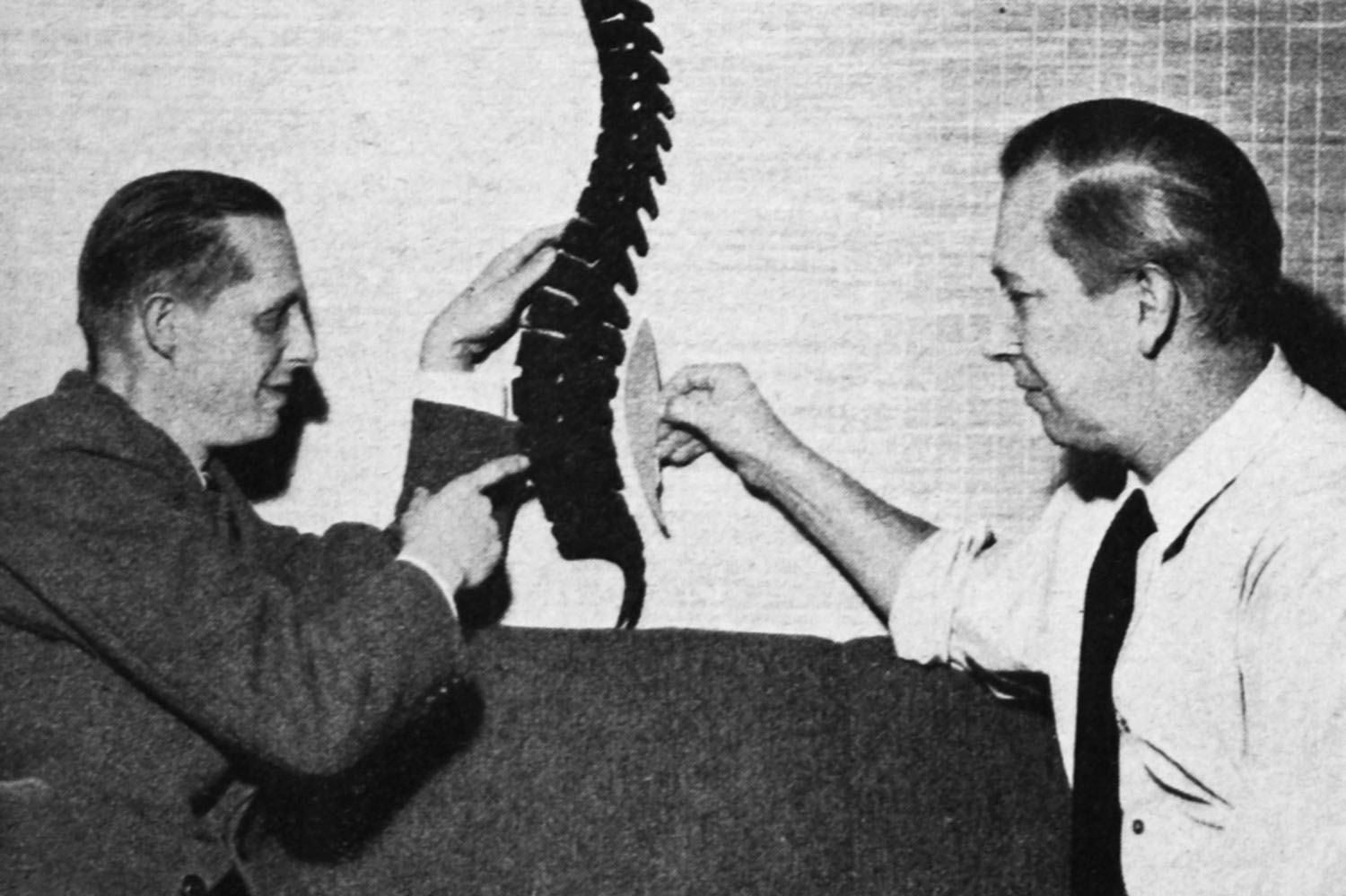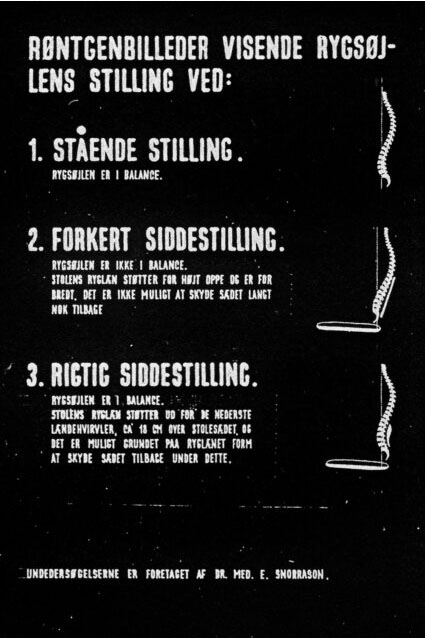
The history of the designs produced by PP Møbler that are derived from Wegner’s study of Ming dynasty chairs is an evolutionary story, spanning more than forty years, told through variations on the theme of the ergonomic round back arm chair.
Each chair has its own individual character, purpose and technical challenges.
Nevertheless, they are each a clear result of the experience Wegner gained from earlier versions. Common to all of them was the omission of the vertical upright or splat back support of the Chinese chairs as it proved to counteract proper ergonomics.
“It’s important to have plenty of space for the behind”, Wegner often explained.


Following the debut of the Round Chair, Wegner went through several distinct phases in seeking an adequate and healthy support for the back.
In the 1950’s Wegner conducted pioneering studies with Consultant, Professor and Doctor of Medicine Egill Snorrason PhD.
The studies were based on X-ray images of the human spine and revealed new insights into the laws of ergonomics. As a statement on the results of the studies Wegner created the Swivel Chair.
The illustration dated 1953 shows the basic conclusions of Wegner’s pioneering studies on ergonomics:


From the organically shaped back supports of the Round, Cow Horn and Swivel chairs carved in large pieces of solid timber offering abundant comfort, Wegner gradually reduced the use of wood in his designs.
This is best illustrated in the character of his Minimalist Chair (see image) with its links to the earlier Bull Chair.
Subsequently, in creating the pp201 | pp203, Wegner returned to the geometric form of the Chinese Chair with a frame and steam bent arms supporting the back while staying true to correct ergonomic principles.
With the Ferry Chair, Wegner increased the comfort reminiscent of the Round Chair.
Finally, in the pp58 | pp68, Wegner distilled the experience of a lifetime to create a simple yet supremely comfortable chair using a single piece of steam bent wood sculptured to support the back.
 photo: Jørgen Schytte
photo: Jørgen Schytte
Wegner in the workshop explaining to Ejnar the three main considerations in his work in defining the pp58 | pp68 which concluded the line of round back arm chairs:

The Circle Chair was presented at the Cabinetmaker’s Guild Autumn Exhibition in 1986 and stands among the most successful and innovative design experiments conducted at PP Møbler.
Throughout most of his career Wegner was pursuing the basic idea of making an easy chair based on a ring. This notion resulted in a number of different chair designs that merely excited as sketches. At the age of 72, Wegner concluded over 40 years of meditating on this simple thought by finishing the Circle Chair.
This was the last of visionary design projects of Wegner and the concept and complexity of the chair demanded the most accurately measured construction drawings and a highly innovative production set up, which PP Møbler took on with great pride.
Despite Wegner’s bold and daring ambition, the Circle Chair is one of his most accommodating easy chairs capable of servicing all members of a family in comfort.
Photo: Wegner presented the prototype of his wooden Circle Chair to HRH Queen Ingrid of Denmark at the 1986 Cabinetmaker’s Guild Autumn exhibition.
 Wegner presented the prototype of his wooden Circle Chair to HRH Queen Ingrid of Denmark at the 1986 Cabinetmaker's Guild Autumn exhibition.
Wegner presented the prototype of his wooden Circle Chair to HRH Queen Ingrid of Denmark at the 1986 Cabinetmaker's Guild Autumn exhibition.